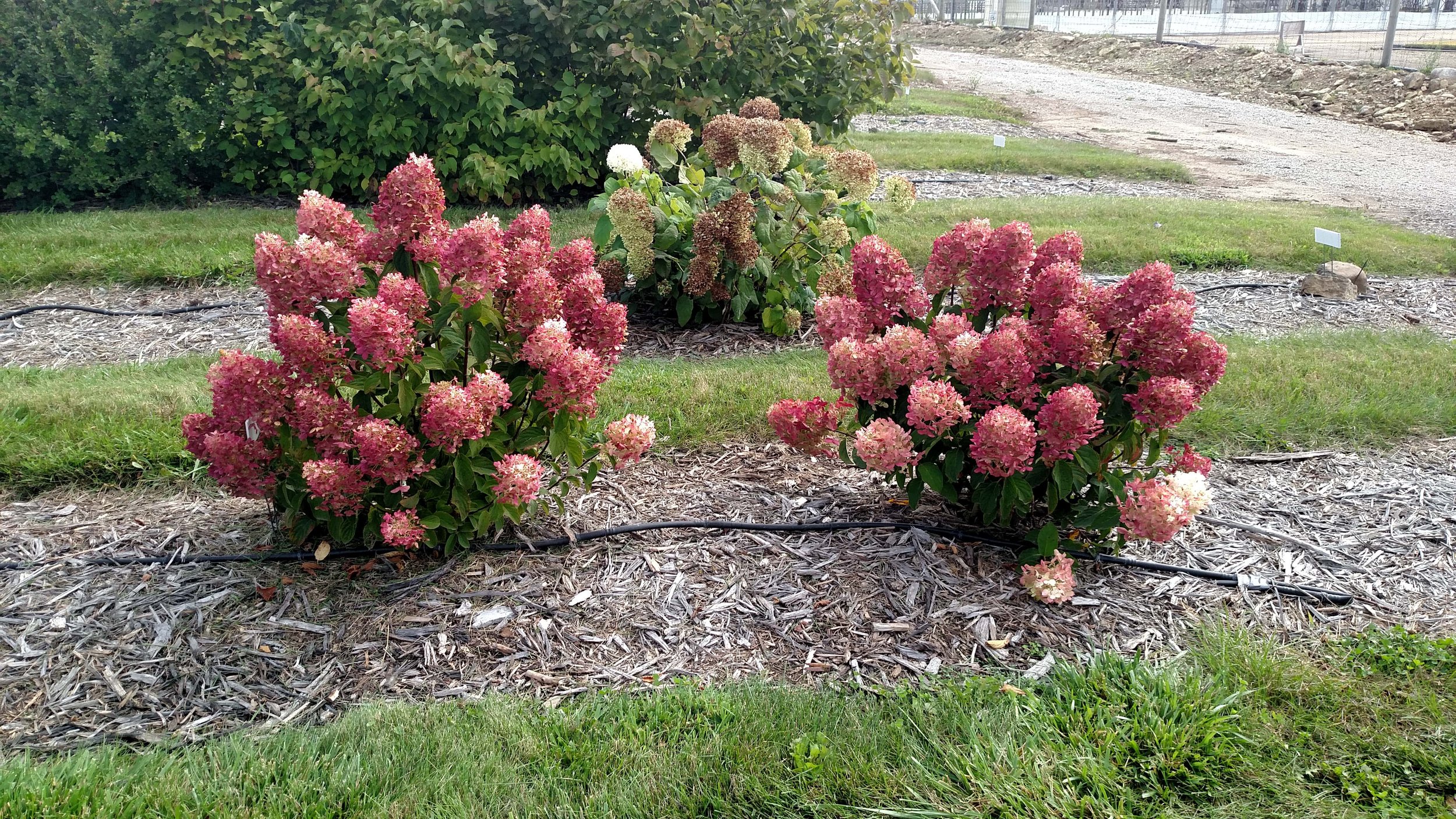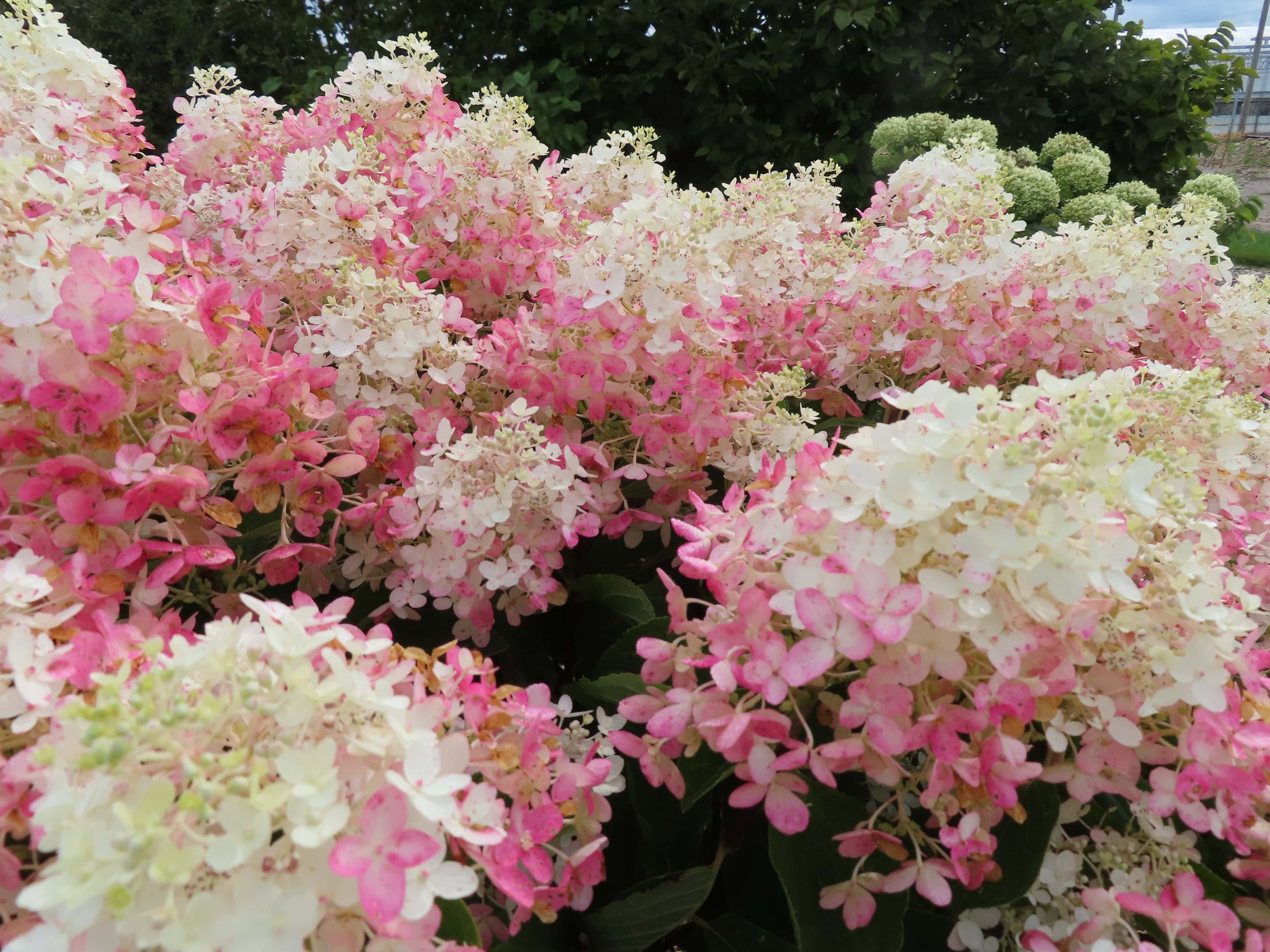The Ultimate Guide to Growing Panicle Hydrangeas
Caring for Panicle Hydrangea
If you are looking for a care guide about Panicle hydrangea, you have come to the right place.
In this blog post, we will discuss everything you need to know in order to grow these beautiful cone-shaped hydrangeas successfully.
We will cover topics such as planting, watering, fertilizing, and pruning. So if you want to learn how to make your Panicle hydrangeas thrive, keep reading!
The items listed are accompanied by affiliate links, meaning I earn a small commission if a purchase is made through my links. This has no impact on the cost to the consumer. I link to products this way whenever possible, and it has no bearing on the products I choose to review or recommend.
About The Panicle Hydrangea
Panicle hydrangea, also known as Hydrangea paniculata, is a stunning shrub that belongs to the Hydrangeaceae family.
These hydrangeas are also known as peegee hydrangeas, hardy hydrangeas, and Limelight hydrangeas.
This hydrangea plant is native to Asia and has been cultivated for centuries as an ornamental plant in gardens and landscapes.
Panicle hydrangea is loved for its large, showy flower heads that bloom in summer and fall, and for its easy-to-care-for nature.
Features of the Panicle Hydrangea
One of the most distinctive features of the Panicle Hydrangea is its flower heads, which are made up of numerous small, white, or pinkish flowers arranged in a cone-shaped panicle.
It has huge pointed flowers that bloom white when they first open, and then as the seasons go they will have a pink or red base.
The color of the blooms is determined by genetics, and while it does shift over the season, this particular species' shift is influenced by aging and temperature, rather than soil conditions.
In addition to its beautiful flowers, the Panicle Hydrangea is also known for its hardy nature and adaptability to different growing conditions.
Hydrangea paniculata is an ideal option for gardeners living in colder climates, as their flower buds form on new growth and new wood, making it impossible to lose bloom due to bud-freeze.
Unlike mophead hydrangeas and other varieties, these buds are formed in the early spring, so they won’t be affected by frost or cold temperatures.
This plant can grow in a wide range of soils and pH levels and is tolerant of both sun and shade.
It is fast growing and the color should stay true year after year. When it gets to be fall and winter, the blooms dry and add interest during the colder months.
Panicle hydrangea can be grown as a shrub or trained into a small tree, depending on your preference.
It typically grows 4 to 5 feet tall and wide. It is more of a mid-sized plant and is perfect for focal points, hedges, and property definition.
There’s an unlimited range of what you can do with these hydrangeas.
Locations Panicle Hydrangeas can be Grown?
Panicle hydrangeas are a gardener's delight, thanks to their versatility and stunning good looks.
Hardy enough for temperatures ranging from USDA Zone 3 to Zone 8 (some can survive down south in Zone 9!), these beauties will bring color into your garden no matter where you live!
RELATED: Perfect Partners: Stunning Hydrangea Companion Plants for a Vibrant Garden
Where can you Purchase Panicle Hydrangea?
Nature Hills Nursery is the best place to purchase Panicle hydrangeas. They are one of the biggest online plant nurseries. They are known for their quality and variety of plants.
Here, you'll find a variety of different types, from the 'French Manicure™ Panicle Hydrangea the Limelight Hydrangea to the Bobo Hydrangea.
Each type will come with detailed instructions for planting and care.
Caring for Panicle Hydrangea
If you want a hydrangea that blooms reliably every year and doesn't require much maintenance, the panicle hydrangea is the perfect choice for you.
Here are some tips on how to care for your panicle hydrangeas:
Soil
With its vast adaptability, this special plant can thrive in almost any soil type and pH range.
However, if you're hoping to give it the best chance at success - be sure your garden or pot has excellent drainage!
Achieving good drainage is a must for the optimal growth potential of these extraordinary plants!
Adding a 3-4 inch layer of mulch to your beds is beneficial for hydrangeas.
Light
Make sure your Panicle Hydrangea gets at least 4 hours of full sun if you live in cooler zones, but give it partial shade during the afternoon if you live in hotter climates.
Water
Hydrangea Paniculata has consistent water needs throughout the growing season.
During extreme heat, plants may require additional water to ensure their survival.
To water effectively, make sure to water deeply when the soil is dry to a depth of three inches.
Fertilizer
These hydrangeas are so easy peasy that they don't require fertilizer.
But if you want to give them a boost you can apply fertilizer- rose fertilizers tend to work well.
Just make sure not to overfeed your hydrangeas as excessive amounts of nitrogen will cause them to produce lots of leaves but fewer flowers!
RELATED: 6 Reasons Your Hydrangea Leaves Are Turning Yellow And How To Fix It
Pruning Panicle Hydrangea
Despite not needing it, panicle hydrangeas can benefit from well-timed pruning in early spring before new growth appears.
To encourage strong stems and better blooms while also maintaining an attractive shapely appearance for your shrub, gently remove any old blossoms that remain after winter has passed to make way for new growth buds which will appear later on in the season.
If needed, you may trim up to one-third of the branches each year.
After pruning my panicle hydrangea in early spring before it will bloom on new wood.
How to Propagate Panicle Hydrangea
Propagating a hydrangea is a fun and rewarding way to add a bit of beauty to your garden.
The best time to do it is in late spring or early summer when the shoots are at their most active stage of growth.
You can propagate through cutting or layering.
Propagating Panicle Hydrangeas From Cuttings:
To get started, take a four to six-inch length of stem from an existing branch, making sure to cut right above a leaf node.
Remove all the leaves except for the top set and moisten the bottom of the stem before dipping it into rooting hormone.
Then, place the cutting about two inches deep in a pot filled with a high-quality soil that is kept regularly moist.
To maintain moisture, cover your hydrangea cutting a clear plastic bag. Keep in a spot that gets bright, indirect sunlight, and make sure to water regularly.
You can transplant the cutting in the garden after it has rooted. To check if it has rooted, gently tug the stem and if it stays in place, it's ready for planting.
Propagating Panicle Hydrangeas by Layering :
Another way to propagate this plant is through layering.
Cut off the bottom leaves from a branch hanging low and bury them in a shallow trench in the soil. Use a rock or brick to hold it down.
Within a few weeks, the buried section of the branch will grow a robust root system.
Afterward, you may remove the branch and relocate it to a new container or find a protected area for it in your garden.
Panicle Hydrangea Pests and Diseases
Panicle Hydrangeas are beautiful and durable shrubs, but like all plants, they are susceptible to pests and diseases most notably scale insects, deer and leaf spot, and powdery mildew.
Scale insects are a common problem in woody plants such as hydrangeas, and can reproduce rapidly if not taken care of.
These small bugs feed on the plant's juices, which can weaken the plant and make it look unsightly.
It is important to be vigilant with monitoring and treating scale insects to keep your panicle hydrangeas looking their best.
Deer are known to enjoy munching on hydrangeas, so it is important to either protect the plants with a fence or spray them with deer repellent.
Leaf spot is a fungal disease that can also plague panicle hydrangeas, causing brown spots on the leaves and reduced growth.
Powdery mildew is another fungal disease that can affect panicle hydrangeas, causing white patches on the leaves.
To avoid these diseases and pests, make sure to monitor your plants regularly and take preventive measures such as pruning away diseased branches, applying fungicides and pesticides if needed, and making sure the plant has adequate water and sunlight.
RELATED: Hydrangea Cane Borer: A Harmful Invader; How to Treat it
FAQS About Panicle Hydrangea
Why is my panicle hydrangea not blooming?
There can be several reasons why your panicle hydrangea is not blooming. It could be due to incorrect pruning, deer grazing on flower buds, too much shade, or disease and pest infestations such as scale insects, leaf spot, and powdery mildew.
When does panicle hydrangea bloom?
Panicle hydrangeas tend to bloom in late summer and early fall.
Can you grow panicle hydrangeas in pots?
Panicle hydrangeas can be grown in a container for a couple of years, especially dwarf varieties which can thrive indefinitely.
To do so, use a weather-resistant container that is at least 16 inches wide and has drainage holes. Fill the container with potting soil up to the level where the plant will be placed.
What are some popular panicle hydrangea varieties?
Popular varieties of panicle hydrangeas include 'French Manicure™ Panicle Hydrangea', ‘Limelight’, Fire Light®, and ‘Pinky Winky’.
These feature large flower clusters in a variety of colors ranging from white to pink and deep purple.
Panicle Hydrangea Plant Summary:
Botanical Name: Hydrangea paniculata
Type: Deciduous
Mature Height: 4 - 5 feet
Mature Spread: 4 - 5 feet
Sun Exposure: Full Sun, Partial Shade
Soil: Well-Drained
Moisture: Moderate
Growth Rate: Fast
Flower Color: White, Pink, Red
Foliage Color: Green
Pollinator Friendly: Yes
Pruning Time: Early Spring
Fragrant: No
Why Get a Panicle Hydrangea?
The panicle hydrangea is a beautiful, easy-to-grow plant that is perfect for gardeners looking for a low-maintenance yet stunning addition to their landscape.
With its large, cone-shaped flower heads that change color over time and its adaptability to different growing conditions, it is a plant that is sure to delight for many years to come.
From your garden outside to your vase indoors, you can get the Panicle Hydrangea here to be the perfect addition to your garden.

















